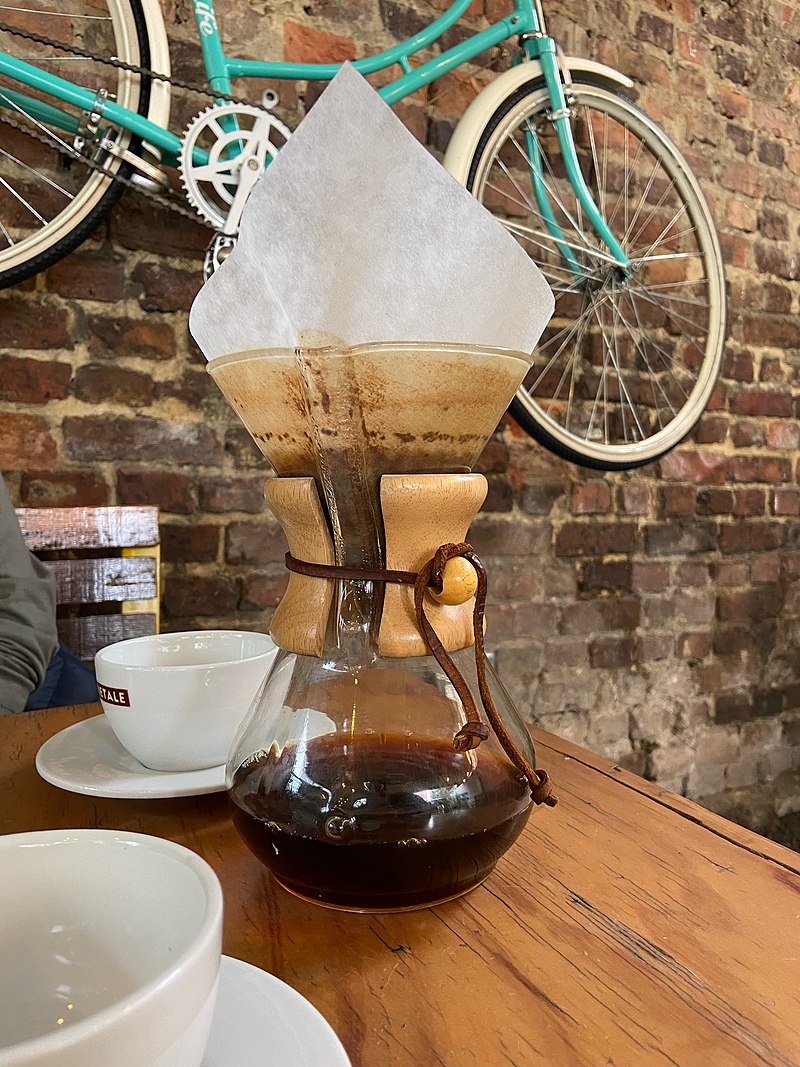If you are among the many people who love starting their morning with the aroma of freshly brewed coffee sipping and drifting through the air, then you are in the right place. This article is made just for you.
The Global Popularity of Coffee
For many, coffee is not just a beverage; it’s a fuel that accompanies coffee lovers to different events. Whether for relaxation, business meetings, or random afternoons for socialization, coffee is undeniably one of the most popular beverages worldwide, enjoyed by millions daily.
Coffee lovers worldwide have perfected the art of brewing, each region with its unique methods and traditions. Its global popularity can be attributed to various factors, including its rich history, cultural significance, and unique flavor profiles.
From the rich, robust flavors of dark roast coffee to the delicate, nuanced flavors of light roast coffee, there’s a coffee for every taste. Additionally, coffee can be enjoyed in various ways, from a simple black cup to a frothy cappuccino or a sweet and creamy latte. This versatility makes coffee appealing to many different tastes and preferences.
Another reason for coffee’s popularity is the widespread of different coffee shops that have become a trendy spot for everyone any time of the day. These global chains have expanded internationally, introducing coffee culture to new markets and demographics.
Diversity in Coffee Brewing Methods
There are many different coffee-making methods, each with its characteristics and flavors.
The variety of coffee brewing methods allows enthusiasts to explore different flavors, aromas, and brewing styles, satisfying different tastes and occasions. Each process involves a unique set of variables, such as grind size, water temperature, and brewing time, contributing to a rich coffee experience. Let’s explore the different brewing methods popular in other regions.
1. Ethiopia: The Birthplace of Coffee
Ethiopia is the home of coffee. Here, coffee is not just a beverage; it’s an integral part of a celebration and social structure. Ethiopia’s unique climate and diverse geography create ideal conditions for coffee growing. The country’s highlands, with fertile soil and abundant rainfall, create an ideal environment for the growth of coffee trees.
Also, Ethiopia is home to many types of coffee, each with its own flavor. From the fruity and floral aromas of the Sidamo region to the rich, earthy flavors of Yirgacheffe, Ethiopian coffee offers a variety of flavors to suit every palate.
Traditional Ethiopian Coffee Ceremony
In Ethiopian coffee ceremonies, coffee beans are roasted over an open fire, crushed with a mortar and pestle, and brewed in jebena, a traditional clay pot. The resulting beer, characterized by its rich flavor and pronounced acidity, is served in small glasses and shared among friends and family, fostering a sense of community and togetherness.
According to one popular legend, a ninth-century Ethiopian goat herder observed that his goats became particularly energetic after eating the coffee berries from a specific plant. Curious about the effects, the herder tried the berries and experienced a similar burst of energy. Intrigued by this discovery, he brought the berries to a local monastery, where monks used them to create a drink that made them stay awake during long hours of prayer.
Whether this is true or not, Ethiopia retains a unique coffee culture, in which the famous and elaborate coffee ceremony became the birthplace of this beloved beverage. Their tradition, which women lead, has this structure:
- Burning incense.
- Roasting green coffee beans.
- Add the beans and water to a round-bottomed pot called jebena, which is long-necked clay, while bringing it to a boil.
It will be served with a makeshift filter before being poured.
Significance and Cultural Aspects
Coffee growing in Ethiopia has a long history, with evidence showing that coffee was developed in the region in the 9th century. The practice of growing and drinking coffee became integral in the culture of Ethiopia and other parts of the Arabian Peninsula.
Furthermore, Ethiopian coffee has been internationally recognized for its outstanding quality and unique taste. Coffee connoisseurs around the world favor it. The Ethiopian government has taken steps to protect and promote its coffee industry, ensuring that farmers receive a fair share for their crops and that coffee is produced sustainably.
2. Italy: The Art of Espresso
Italians take pride in using high-quality coffee beans for their espresso. The choice of coffee beans is vital in achieving Italian espresso’s rich and intense flavor.
From the bustling cafes of Rome to the quaint streets of Florence, Italians have mastered the art of espresso, creating a drink that is both a daily ritual and a symbol of Italian identity. Making the perfect espresso involves carefully selecting the right blend of coffee beans, grinding them meticulously, and then using an espresso machine to extract a concentrated, pure dose of coffee.
Espresso Brewing Technique
Espresso machines play a crucial role in the art of brewing. Traditional manual espresso machines are still popular, but automatic machines are also widely used.
The brewing technique used to create this rich and flavorful drink is art. In Italy, where coffee is deeply ingrained in the culture, making espresso is highly valued.
One of the most beloved classic brewing methods in Italy is the Moka pot. It is also known as a stovetop espresso maker, a popular coffee brewing method in Italy. It was invented by Alfonso Bialetti in 1933 and has been used to make small and intense coffee that became an iconic part of Italian coffee culture.
They have taken the traditional format of the octagonal Moka pot and embellished it with design elements that add beauty and impressive style to the device. The shape is also designed to prevent the coffee from burning during the so-called eruption phase, which is one of the problems with traditional Bialetti Moka Pot coffee.
Variations and Italian Coffee Culture
Italian coffee culture emphasizes quality over quantity. Coffee is an enjoyable experience; special attention is paid to selecting coffee beans, grinding, and preparation methods.
From traditional espresso to mind-blowing cappuccino, Italian coffee has become an indispensable part of the daily lives of many Italians.
The art of coffee in Italy is rooted in tradition and is considered a true art form.
1. Espresso
This strong, concentrated coffee is made by forcing hot water through finely-ground coffee beans.
The result is small amounts of rich coffee that many Italians enjoy throughout the day. Espresso is commonly served in small cups and is often drunk quickly at the coffee shop bar.
2. Cappuccino
This creamy, frothy coffee combines equal portions of steamed milk, espresso, and foam.
3. Macchiato
The macchiato is an espresso with a small amount of milk foam.
4. Caffè Latte
This coffee variation is a milky coffee made with espresso and steamed milk.
5. Caffe Americano
This is a diluted espresso served in a larger cup, which is relatively more similar to what is commonly consumed in the United States.
3. Turkey: Brewing with Tradition
Coffee is another beloved beverage in Turkey, with a brewing method that dates back to the Ottoman Empire. With its strong flavor and thick texture, Turkish coffee has been a staple in Turkish households for centuries. This traditional method of brewing coffee has become a cultural symbol and a way of bringing people together.
Turkish Coffee Preparation
Turkish coffee, prepared in cezve, is a fine powder made from freshly roasted beans and slowly brewed over low heat. The mixture is heated slowly, allowing the coffee to foam without boiling over. This method produces a solid and flavorful coffee with foam on top.
Coffee is poured into small cups, along with its residue, allowing the drinker to read their future according to the patterns left behind. This ancient ritual creates a richly aromatic beverage and brings a sense of spirituality and mystery to the coffee-drinking experience.
Making fine Turkish coffee can be challenging to master, and some methods even include leaving the freshly brewed coffee on a sand bed as part of the process. It is traditionally served in small cups the same size as an espresso cup and often accompanies delicious Turkish dishes.
Cultural Importance of Turkish Coffee
The preparation and serving of Turkish coffee have been passed down through generations, making it an integral part of Turkish culture. Also, Turkish coffee is an essential part of social gatherings and celebrations. It is often served during special occasions such as weddings, engagements, and religious holidays.
Offering Turkish coffee is a gesture of hospitality. It’s a common tradition to serve guests a cup of Turkish coffee, often accompanied by sweet treats, as a sign of welcome and warmth. Turkish culture involves offering someone a cup of coffee as a gesture of friendship and hospitality.
The act of drinking coffee together brings people closer and creates a sense of community. It is a way to welcome guests into one’s home and show them respect and kindness.
4. Japan: Kyoto-Style Cold Brew
Japan is known for its vast and rich cultural heritage, breathtaking landscapes, and exquisite cuisine. Kyoto-style cold brew stands out as a unique and refreshing drink among the many delicious dishes. This traditional Japanese method of making coffee has become popular not only in Japan but also around the world.
The pour-over method demonstrates precision and elegance. With meticulous attention to detail, the barista pours hot water over the finely ground coffee, allowing it to bloom and gradually release its aroma. The result is clean, nuanced, and deeply satisfying, reflecting the Japanese philosophy of finding beauty in simplicity.
Kyoto-style cold brew is a slow, meticulous process that involves soaking coffee grounds in cold water for a long time. Unlike traditional hot brewing methods, which extract flavors quickly, cold brewing allows for more subtle and nuanced extractions. The result is a smooth yet delicious cup of coffee with low acidity and bitterness. Also, cold brew Drip Tower originated in Japan, a slow dripping cold brew tower creating an incredibly smooth but flavorful cold brew coffee.
The Process of Kyoto-Style Brewing
- The first step in making Kyoto-style coffee is choosing the right coffee beans. Choosing grains suitable for cold brewing is vital, as this method extracts flavor differently than traditional hot brewing.
- Use a higher coffee-to-water ratio than traditional hot brewing.
- Grinding will follow once the beans have been selected with the correct water ratio. The beans should be ground to a medium-coarse consistency, similar to sea salt.
- After grinding, the coffee grounds are placed in a special Kyoto-style brewing apparatus.
- Prepare the brewer tower to use. Slowly drip cold, filtered water over the coffee grounds. The slow drip is a crucial characteristic of Kyoto-style brewing, which can take several hours to complete.
- Once the brewing process is complete, the coffee is all set. Kyoto-style brewed coffee is typically served over ice, as the slow extraction process results in a concentrated coffee concentrate that is then diluted with water or milk.
5. Colombia: “Sock” Coffee Brewing
Colombia is renowned for its coffee production, and various brewing methods are used nationwide. The most popular traditional coffee brewing method in this region is the “Sock” Coffee Brewing, also known as “Colador” or “Chorreador,” which has been passed down through generations and is still widely used in Colombian households today.
The sock coffee brewing process involves a simple yet effective setup. A wooden stand with a metal ring on top holds a fabric filter resembling a sock. Coffee grounds are placed inside the filter, and hot water is poured on top, allowing the brewed coffee to drip into the waiting cup or carafe below.
Also, it’s easy to find a chorreador in Colombia. This is a coffee-making device in which hot water drains through coffee grounds held in a filter(cloth) mounted on a wooden stand and drips into a container. The chorreader uses a cloth filter bag called bolsita held open by a wire rim to drain the coffee, and everyone agrees it looks like a sock, thus the name.
The Flavor Profile of Colombian Coffee
There are many contributing factors to the unique taste of Colombian coffee, making it a favorite among coffee enthusiasts. Colombia’s unique combination of climate, altitude, and soil conditions creates the perfect environment for growing high-quality coffee beans. The flavor profile of Colombian coffee is characterized by its richness, balance, and distinct notes of fruit and chocolate.
Colombian coffee typically has medium to full-body beans, which means it has a substantial and well-rounded feel on the palate. This characteristic is often attributed to the high-quality Arabica beans commonly grown in the country.
Another key factor contributing to Colombian coffee’s flavor profile is the country’s diverse geography. Colombia is blessed with a range of microclimates. This diversity allows for cultivating different coffee varieties with distinct flavor characteristics.
Lastly, the Colombian coffee profile is mainly characterized by a clean and smooth finish. The well-balanced combination of acidity, sweetness, and body contributes to a pleasant aftertaste.
Conclusion
Exploring different coffee brewing methods worldwide adds depth to the enjoyment of coffee, taking an adventure on how the same beverage can take on many different forms based on preferences and cultural traditions. Each method has its characteristics and practices, reflecting coffee’s rich history and cultural importance in other societies.





